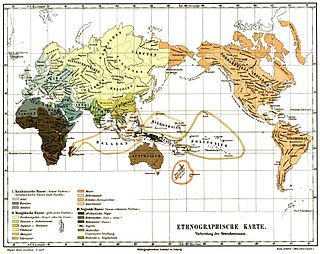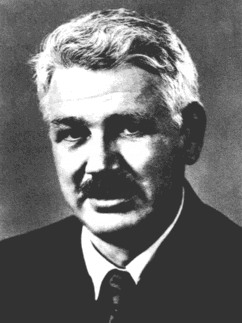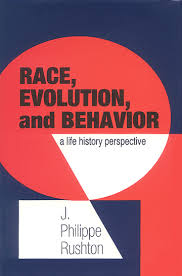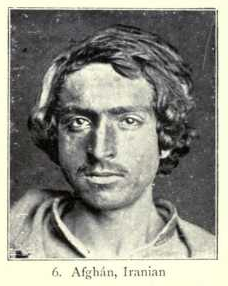History of the concept
The Caucasus as the origin of humanity and the peak of beauty
In the eighteenth century, the prevalent view among European scholars was that the human species had its origin in the region of the Caucasus Mountains. [22] This view was based upon the Caucasus being the location for the purported landing point of Noah's Ark – from whom the Bible states that humanity is descended – and the location for the suffering of Prometheus, who in Hesiod's myth had crafted humankind from clay. [22]
In addition, the most beautiful humans were reputed by Europeans to be the stereotypical "Circassian beauties" and the Georgian people; both Georgia and Circassia are in the Caucasus region. [23] [22] The "Circassian beauty" stereotype had its roots in the Middle Ages, while the reputation for the attractiveness of the Georgian people was developed by early modern travellers to the region such as Jean Chardin. [22] [24]
Göttingen school of history

The term Caucasian as a racial category was introduced in the 1780s by members of the Göttingen school of history – notably Christoph Meiners in 1785 and Johann Friedrich Blumenbach in 1795 [lower-alpha 2] [ page needed ]—it had originally referred in a narrow sense to the native inhabitants of the Caucasus region. [25]
In his The Outline of History of Mankind (1785), the German philosopher Christoph Meiners first used the concept of a "Caucasian" (Kaukasisch) race in its wider racial sense. [lower-alpha 2] [ page needed ] [26] Meiners' term was given wider circulation in the 1790s by many people. [lower-alpha 3] Meiners imagined that the Caucasian race encompassed all of the ancient and most of the modern native populations of Europe, the aboriginal inhabitants of West Asia (including the Phoenicians, Hebrews and Arabs), the autochthones of Northern Africa (Berbers, Egyptians, Abyssinians and neighboring groups), the Indians, and the ancient Guanches. [36]

It was Johann Friedrich Blumenbach, a colleague of Meiners', who later came to be considered one of the founders of the discipline of anthropology, who gave the term a wider audience, by grounding it in the new methods of craniometry and Linnean taxonomy. [37] Blumenbach did not credit Meiners with his taxonomy, although his justification clearly points to Meiners' aesthetic viewpoint of Caucasus origins. [38] In contrast to Meiners, however, Blumenbach was a monogenist—he considered all humans to have a shared origin and to be a single species. Blumenbach, like Meiners, did rank his Caucasian grouping higher than other groups in terms of mental faculties or potential for achievement [37] despite pointing out that the transition from one race to another is so gradual that the distinctions between the races presented by him are "very arbitrary". [39]
Alongside the anthropologist Georges Cuvier, Blumenbach classified the Caucasian race by cranial measurements and bone morphology in addition to skin pigmentation. [40] Following Meiners, Blumenbach described the Caucasian race as consisting of the native inhabitants of Europe, West Asia, the Indian peninsula, and North Africa.[ citation needed ] This usage later grew into the widely used color terminology for race, contrasting with the terms Negroid, Mongoloid, and Australoid. [41]
Carleton Coon
There was never consensus among the proponents of the "Caucasoid race" concept regarding how it would be delineated from other groups such as the proposed Mongoloid race. Carleton S. Coon (1939) included the populations native to all of Central and Northern Asia, including the Ainu people, under the Caucasoid label. However, many scientists maintained the racial categorizations of color established by Meiners' and Blumenbach's works, along with many other early steps of anthropology, well into the late 19th and mid-to-late 20th centuries, increasingly used to justify political policies, such as segregation and immigration restrictions, and other opinions based in prejudice. For example, Thomas Henry Huxley (1870) classified all populations of Asian nations as Mongoloid. Lothrop Stoddard (1920) in turn classified as "brown" most of the populations of the Middle East, North Africa, the Horn of Africa, Central Asia and South Asia. He counted as "white" only European peoples and their descendants, as well as a few populations in areas adjacent to or opposite southern Europe, in parts of Anatolia and parts of the Rif and Atlas mountains.
In 1939, Coon argued that the Caucasian race had originated through admixture between Homo neanderthalensis and Homo sapiens of the "Mediterranean type" which he considered to be distinct from Caucasians, rather than a subtype of it as others had done. [42] While Blumenbach had erroneously thought that light skin color was ancestral to all humans and the dark skin of southern populations was due to sun, Coon thought that Caucasians had lost their original pigmentation as they moved North. [42] Coon used the term "Caucasoid" and "White race" synonymously. [43]
In 1962, Coon published The Origin of Races, wherein he proposed a polygenist view, that human races had evolved separately from local varieties of Homo erectus. Dividing humans into five main races, and argued that each evolved in parallel but at different rates, so that some races had reached higher levels of evolution than others. [15] He argued that the Caucasoid race had evolved 200,000 years prior to the "Congoid race", and hence represented a higher evolutionary stage. [44]
Coon argued that Caucasoid traits emerged prior to the Cro-Magnons, and were present in the Skhul and Qafzeh hominids. [45] However, these fossils and the Predmost specimen were held to be Neanderthaloid derivatives because they possessed short cervical vertebrae, lower and narrower pelves, and had some Neanderthal skull traits. Coon further asserted that the Caucasoid race was of dual origin, consisting of early dolichocephalic (e.g. Galley Hill, Combe-Capelle, Téviec) and Neolithic Mediterranean Homo sapiens (e.g. Muge, Long Barrow, Corded), as well as Neanderthal-influenced brachycephalic Homo sapiens dating to the Mesolithic and Neolithic (e.g. Afalou, Hvellinge, Fjelkinge). [46]
Coon's theories on race were much disputed in his lifetime, [44] and are considered pseudoscientific in modern anthropology. [47] [48] [49] [50] [51]
Criticism based on modern genetics
After discussing various criteria used in biology to define subspecies or races, Alan R. Templeton concludes in 2016: "[T]he answer to the question whether races exist in humans is clear and unambiguous: no." [52] : 360













